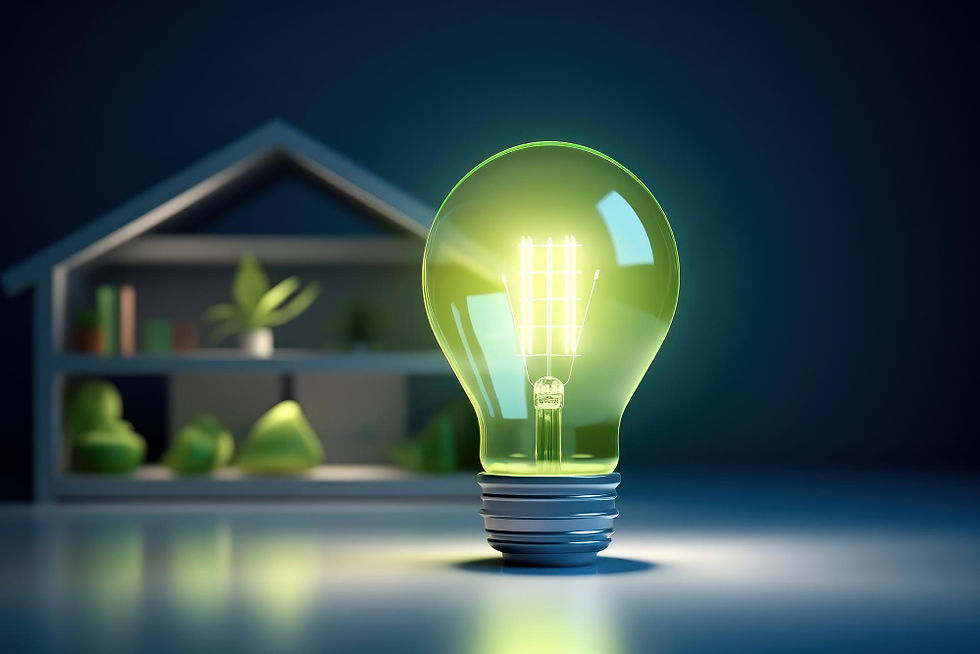The Importance of Eco-Friendly Materials in Interior Design: Creating Sustainable and Stylish Spaces
- Bhavana Kadam

- Nov 4, 2023
- 3 min read

Introduction:
In the world of interior design, there's a growing awareness of the need for eco-friendly and sustainable practices. Today, more than ever, people are seeking ways to make their living spaces beautiful while minimizing their environmental footprint. One key aspect of achieving this balance is the use of eco-friendly materials in interior design. In this blog, we will explore the many reasons why eco-friendly materials are so important in the world of interior design.
Sustainability and Environmental Impact: Eco-friendly materials are at the heart of sustainable interior design. They are sourced and manufactured with the environment in mind. This means utilizing renewable resources, recycling materials, and employing manufacturing processes that reduce carbon emissions.
Health Benefits: Choosing eco-friendly materials can significantly improve the health of your living space. These materials are often free from harmful chemicals and toxins commonly found in traditional materials. As a result, indoor air quality improves, reducing the risk of allergies and respiratory problems.
Longevity and Durability: Eco-friendly materials are built to last. This not only saves you money in the long run but also reduces waste and resource consumption. Investing in durable, sustainable materials means less frequent replacements or refurbishments.
Energy Efficiency: Certain eco-friendly materials, like those with high thermal insulation properties, contribute to improved energy efficiency in your space. This translates to reduced energy bills and a smaller carbon footprint.
Biodiversity Conservation: Sustainable materials often involve responsible sourcing practices that protect forests and habitats. By choosing these materials, you contribute to the conservation of biodiversity and ecosystems.
Reduced Waste: Eco-friendly materials are often produced with minimal waste in mind. Plus, many of them can be recycled or repurposed at the end of their life cycle, reducing landfill waste and conserving resources.
Aesthetics and Design Variety: Gone are the days when sustainable meant sacrificing style. Eco-friendly materials are now available in a wide range of styles, textures, and colors, ensuring that your design vision can be realized without compromise.
Market Demand and Resale Value: Sustainable interior design is on the rise, and homes with eco-friendly materials often have higher resale values. This makes it a wise investment for homeowners and businesses alike.
Government Incentives and Certifications: Many governments offer incentives for using eco-friendly materials and following sustainable design practices. Numerous certifications and programs are available to help identify and source such materials.
Ethical Considerations: Using eco-friendly materials aligns with ethical and responsible design practices. It contributes to a more responsible and sustainable way of living, reflecting a commitment to the environment and future generations.
Collaborative Efforts: Interior designers can play a pivotal role by collaborating with suppliers, manufacturers, and clients to ensure that eco-friendly materials are used. Together, they contribute to a more sustainable and responsible design industry.
Case Studies and Success Stories: Let's not forget about the success stories. Real-world examples of interior design projects that have successfully incorporated eco-friendly materials demonstrate the positive impact on both the environment and the aesthetics of a space.
Conclusion: Eco-friendly materials in interior design are not just a trend; they are a necessity. They represent a holistic approach to creating beautiful, sustainable, and healthy living spaces. By choosing eco-friendly materials, you can contribute to a more eco-conscious and ethical world, while also enjoying the numerous benefits they offer, from better health to energy savings and increased property value. So, the next time you embark on an interior design project, consider the importance of eco-friendly materials, and let your space reflect both your style and your commitment to the environment. It's a win-win for everyone.




Comments